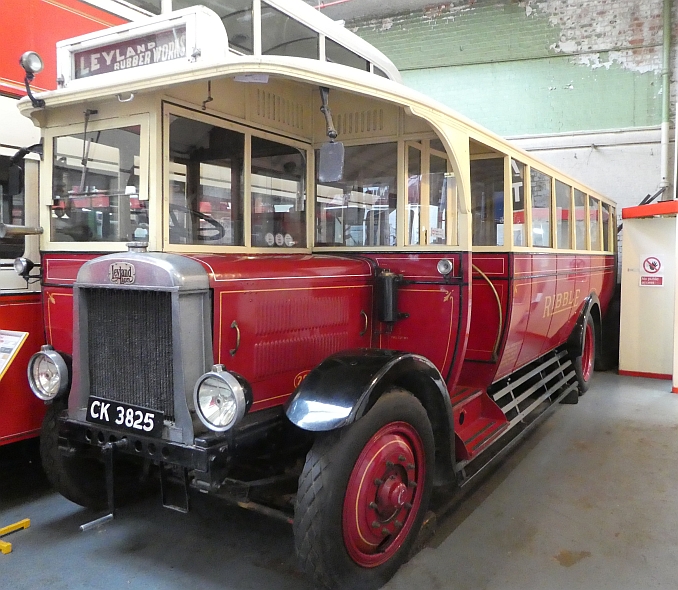Ribble Motor Services
Ribble Motor Services was more than just a bus company, it was an integral part of everyday life across Lancashire.
From its humble start in 1919, those red and cream buses became a familiar sight rolling through cobbled town centres, seaside promenades and winding country lanes.
I only ever saw a Ribble bus in service once. When I was seven I traveled with my family from Glasgow to Morecombe in 1959 and stood gaping in amazement at my first ever view of a rear-engined double decker bus.
Ribble Motor Services History
- 1919: Founded in Preston, Lancs. The original livery was a dark red base with cream lining.
- 1920s to 1930s: Ribble grew rapidly via acquisition of many local operators across Lancashire and Cumbria. The red and cream livery became well established.
- 1940s to 1950s: Introduced express coach double-deckers known as the White Ladies. Coaches carried a cream/red livery. Local buses stayed red/cream.
- 1960: Focus on express routes, motorway services; larger coaches and double decker express buses used. Types of buses included Leyland Atlanteans and Leopards.
- 1969: Ribble became part of NBC (National Bus Company). Fleet & branding moved toward standardisation.
- 1970s to early 1980s: Modernisation of fleet which included large numbers of Leyland Nationals, Atlanteans, Leopards, etc. The livery continued as red/cream but simplified in styling.
- 1986: Deregulation triggered major structural changes,depots transferred, Ribble brand identity reduced and the classic red/cream scheme gradually replaced.
- 1990s to present day: Ribble Vehicle Preservation Trust preserves key vehicles and maintains the heritage. The historic liveries of red/cream and cream/red can still be seen at events.
Some Ribble Buses
1927
 Photographed at the Transport Museum Greater Manchester: © VintageBuses.org — Creative Commons BY 4.0
Photographed at the Transport Museum Greater Manchester: © VintageBuses.org — Creative Commons BY 4.0
Ribble: Leyland Lion PLSC1 (1927). Replica body built by Leyland (1981)
1951
.jpg) Geof Sheppard, CC BY-SA 4.0, via Wikimedia Commons
Geof Sheppard, CC BY-SA 4.0, via Wikimedia Commons
Preserved Leyland Titan DCK219 has distinctive full-front lowbridge bodywork by East lancashire Coachbuilders. It was number 1248 in the Ribble fleet and is seen leaving the Norton Fitzwarren Steam Fayre in 2009. Geof Sheppard
1960
.jpg) bilbobagweed, CC BY 2.0, via Wikimedia Commons
bilbobagweed, CC BY 2.0, via Wikimedia Commons
Ribble coach 1072 (reg. NRN 169), a 1960 Leyland Leopard PSUC1/2 with Duple (Midland) Donnington bodywork bilbobagweed
1961
Geof Sheppard, CC BY-SA 4.0, via Wikimedia Commons
A preserved Harrington Cavalier coach (regsitration PCK618; number 1036 in the Ribble fleet) at the Southdown centenary rally in Southsea. Geof Sheppard
1962
,_Bolton_Victoria_Square_bus_rally,_2_May_2009_(2).jpg) Leyland Atlantean MCW (1962): Pimlico Badger, CC BY-SA 2.0, via Wikimedia Commons
Leyland Atlantean MCW (1962): Pimlico Badger, CC BY-SA 2.0, via Wikimedia Commons
Ribble bus 1805 (RRN 405), Bolton Victoria Square bus rally, 2 May 2009 Pimlico Badger
1962
,_2011_Merseyside_Transport_Trust_running_day_(1).jpg) calflier001, CC BY-SA 2.0, via Wikimedia Commons
calflier001, CC BY-SA 2.0, via Wikimedia Commons
Ribble Motor Services Leyland PD3 MTT Running Day Liverpool South Parkway Sep 2011 Calflier001
1981
.jpg) calflier001, CC BY-SA 2.0, via Wikimedia Commons
calflier001, CC BY-SA 2.0, via Wikimedia Commons
- Registration: GFR 101W
- Year new: 1981
- Fleet Number: 2101
- Chassis: Leyland Olympian prototype
- Body: ECW (Eastern Coach Works) double deck
- Operator: Ribble Motor Services
Delivered new to Ribble Motor Services in 1981, this bus was one of the very first Leyland Olympians, a design born from the merger of Bristol Commercial Vehicles and Leyland. Officially registered as a Bristol for type-approval reasons, it carried the full Leyland badging and introduced the Olympian layout that went on to dominate double deck production through the 1980s and 1990s.
Sources
- Wikipedia: Ribble Motor Services
- Ribble Vehicle Preservation Trust
- Made in Preston
- Commercial Motor Archive
- Fylde Transport Trust: Ribble
Further Information
- POST: No Engine

